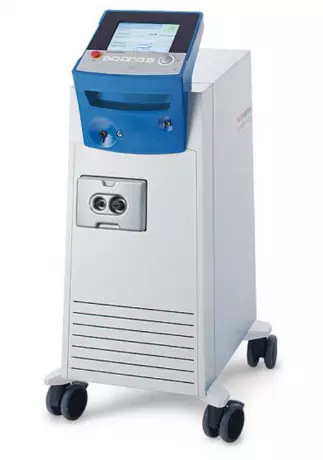
Surgical laser systems In the early 1990s, we started developing the first laser surgery devices....
Portal and digital medical technology fair of the largest MedTech cluster in Germany

The Laser ENT surgery market is growing rapidly, with several important factors contributing to this growth. In order to understand how the market can grow and develop, the report outlines the different segments and factors that can influence its growth. The scope of the report is global, with detailed information on the latest technological developments, market concentration rate, and competitive landscape. This report is also a useful tool for investors and companies looking to expand their operations. The Global ENT Surgery Laser market is estimated to reach $1.3 billion by 2020.
The CO 2 laser is a type of laser that targets water, which is present almost everywhere in the body. The laser's effects depend on the amount of energy absorbed and can be coagulation, carbonisation, vapourisation, or ablation. Depending on the wavelength of the light, the effects may include abrasion, burning, or vaporisation. The ENT Surgery Laser Market research provides key information for businesses looking to enter the market.
The CO 2 laser is the most commonly used type of Laser ENT surgery. This type of laser is most effective at treating the nasal cavity. It can treat nasal congestion and other sinus problems by targeting the water in the nose and throat. It is an effective method for eliminating nasal polyps and other nasal conditions. In addition to removing tonsils, CO2 lasers can also help in treating other types of ear infections and other disorders.
There are three types of CO2 lasers in use today. One of these types targets water at a wavelength of 10,600 nm, which is very close to the water molecules in the body. The effects of CO2 lasers will vary depending on how much energy is absorbed by the water molecules. The CO2 laser can cause coagulation, carbonisation, or vapourisation. It can also ablate tissue. Once the energy enters the target area, it will cause it to coagulate.
The ENT Surgery Laser market is a global market that has been growing rapidly for the past five years. Currently, it is being used for both cosmetic and functional procedures. The technology behind this technology is highly advanced, with a tiny focused spot that offers exceptional photoablation capabilities. Furthermore, the EasySpot laser system allows surgeons to control the main operative functions with ease and precision. This type of surgical instrument is also highly adaptable to changing patient needs.
Dr. Steven Bramwit has recommended that patients undergo laser ENT surgery. This type of treatment uses a laser to destroy diseased and abnormal tissue without harming healthy tissue. The laser also allows for less pain and fewer complications, allowing for faster recovery. Using a laser is also safer than traditional techniques, and enables a surgeon to make more precise cuts. This technology has many advantages and is considered the gold standard for ENT applications.
The Laser ENT surgery market is expected to continue growing, with the use of lasers becoming more commonplace. In fact, the technology is gaining popularity for minimally invasive, highly accurate surgery. With the use of lasers, the cost of the procedure is also decreased. The laser is used in both outpatient and inpatient procedures. Further, it has a wide range of benefits. It can be used for many different applications, including the treatment of a variety of diseases.
The KTP laser is a high-power, long-lasting laser that is highly effective for ENT surgery. Its long-lasting beams can withstand the stress placed on the throat by a patient's ear, and help the surgeon complete the procedure more efficiently. During the surgery, the patient is given protective eyewear, which allows the doctor to monitor his or her vision. A CO2 laser can be used for larger surgeries.
ENT surgeons commonly use scope-based diagnostic procedures. The clinician projects a light into the ear and observes the image. The image can then be printed or processed to examine the tissue's condition. The handheld otoscope is a handheld device with a light source and a magnifying lens. It is used to diagnose and treat external ear pathologies and reveal anatomical details of the tympanic membrane.
Become a digital exhibitor yourself in the online portal of the largest and best-known MedTech cluster region in Germany and inform the world of medical technology about your products and services as well as about news, events and career opportunities.
With an attractive online profile, we will help you to present yourself professionally on our portal as well as on Google and on social media.